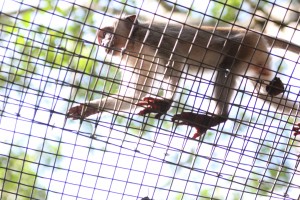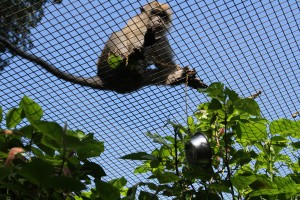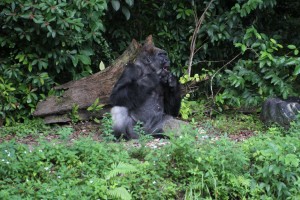Posted October 30, 2015
By SIYUAN TONG
“Oh my God, I love this place,” shouted Christina Smith, a visitor to the Monkey Jungle who is from New Jersey. “This is amazing.”
If you have never been to a place that gives you a close-up experience with monkeys or if you just simply love primates, Monkey Jungle is the place for you.
Located off the Florida Turnpike and Highway U.S. 1 in the South Miami-Dade area, Monkey Jungle can be reached easily for visitors from Miami and Fort Lauderdale.
It is also an appealing stop if you are traveling through Miami to the Florida Keys or the Everglades.
Monkey Jungle first started because its founder—Joseph DuMond, an animal behaviorist needed a place to do primate researches. When he found that the climate and ecology in South Florida was similar to the monkeys’ natural habitats, he established Monkey Jungle in 1933 so that he can observe primate behavior and ecology as in the wild.
In 1935, because of the insufficiency of funding for his project, he started to charge admission fees. However, due to the fact that Java monkeys are territorial by nature—viewed public’s presence as an intrusion and behaved aggressively, DuMond had to cage his visitors.
Therefore, unlike your normal zoo experience, Monkey Jungle is a place where, for the most part, humans are caged while monkeys can go wild. You will also get the opportunity to see how monkeys behave and interact with one another in the most natural way.
With the wire fences all around to separate guests and monkeys, you are not allowed to touch or feed monkeys directly. While this can be a little disappointing, it is another kind of fun to see monkeys crawling over your head upon the fences and looking at you from top down. Especially when you see the curiosity inside the eyes of the newborn babies, your heart will just melt.
Though due to the setting of the park, it is impossible for monkeys to get food directly from your hands, Monkey Jungle does provide another way for you to feed the monkeys.
You can put the food in chained metal bowls hanging from the top fences, and monkeys have learned how to pull the bowls up to get the food.
“Feeding them was just so much fun,” said Smith. “I always know monkeys are smart, but it is different when you actually see it.”
Whenever you get closer to a chained bowl, you will see a cute little creature (sometimes more) runs to the chain and looks at you with his big black eyes—probably similar to the situation when a child looking at his parents for his favorite toy. How could you say no to a creature like that?
You pour some raisins into the container and, once you are done, you will see the monkey pulls it up with proficiency and eats the raisins. The funniest part is probably when you meet a hungry monkey. He will not be satisfied and pick up the food unless you give him a great amount.
“They are so funny,” said Maya Smilauerova, visiting from Hungary. “They will just stare at you if they think the food is too little and force you to give them more.”
Other than just looking at and feeding the monkeys, Monkey Jungle provides four different presentations to make your experience more interesting. The schedule of the shows is well designed and convenient — they connect with each other perfectly so you can go over all of them without wasting time waiting or planning.
The shows themselves are attractive and as well as educational. You learn the hierarchies in the monkey society, and all kinds of monkeys’ habits and their general information.
Meanwhile, you get touched by the interactions and the bonds between primates and their trainers.
You are really going to laugh when King the gorilla poured out the whole bottle of ice tea in front of everybody during the presentation because he does not want it that day.
“Primates are so adorable,” said Christian Deane, a University of Miami alumnus and current monkey tender in Monkey Jungle. “I have been working with them for 10 years and I just love my job.”
Bri Valdez, another monkey tender, said something similar as well.
“I only worked in Monkey Jungle for five months by now … but I love it. It is interesting to see how they behave. They are so smart and once they accept you, they respond when you call their names and will play with you.”
Though, as visitors, we might not be able to interact with monkeys too much and the park itself is only about 30 acres, it is still a unique and unforgettable experience.
The admission fee might be a little pricey, but you will definitely enjoy yourself and should feel worth it if you have interest in monkeys. Besides the normal admission, there is also a rain forest adventure tour available, which allows you to go into the forest and have squirrel monkeys climbing on you. However, that does require an additional fee.
If You Go
- Address: 14805 SW 216th St., Miami, Fla. 33170.
- Phone: 305-235-1611.
- Hours: 9:30 a.m. to 5 p.m., seven days a week (ticket office closes at 4 p.m.).
- Rates: $29.95 for adults, $23.95 for children (3-9), and $27.95 for seniors (65+).
- Parking: free.
- Annual membership available (call for more information).
- Rain forest adventure tour available (call for price and more).
- Discount: Ticket buy one get one free during Miami attraction month with coupon presented in print.



